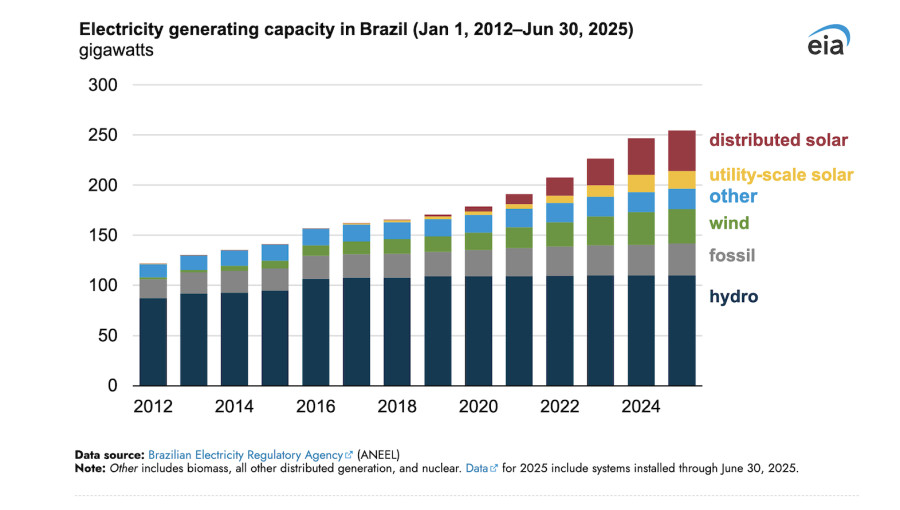Brazil has seen a remarkable surge in distributed solar generation capacity, positioning it as the fastest-growing power source in the country since 2019. From under 1 gigawatt (GW) in 2018, this capacity has skyrocketed to an anticipated 40 GW by mid-2025, which accounts for 43% of the total electricity generation capacity added during that time. This growth has been significantly influenced by the implementation of net metering policies, allowing solar system owners to sell excess power back to the grid.
As of June 30, 2025, Brazil’s total solar electric generation capacity reached 23% of its overall electricity capacity. Compared to distributed solar, utility-scale solar capacity remained much lower at 17.9 GW. The distributed solar sector is heavily dominated by solar photovoltaics, which encompass 99% of the available capacity, with the remaining 1% coming from small hydro and wind. The country has witnessed the installation of over 3.7 million renewable distributed generation systems, primarily located on rooftops of homes and businesses.
Brazil’s net metering policies have evolved since their inception in 2012. Initially allowing generators up to 1 megawatt (MW) to qualify, the policy was modified in 2015 to expand the limit for most renewable sources to 5 MW while maintaining a 3 MW limit for small hydro. However, recent regulations from 2022 and 2023 restricted small generators with energy storage systems to a maximum of 3 MW. Despite these changes, the unrestricted limit for solar energy generation without storage remains at 5 MW.
In terms of regional distribution, the highest concentrations of distributed solar capacity are found in São Paulo, Minas Gerais, Paraná, Rio Grande do Sul, and Mato Grosso. São Paulo, the leader in this sector with 5.8 GW, has introduced favorable policies that promote solar installation, such as tax incentives. While the growth of solar capacity—both utility-scale and distributed—is expected to continue, the pace of expansion remains uncertain. Currently, ANEEL’s data indicates a total of 122 GW in planned utility-scale solar projects, though only 6 GW are presently under construction.

